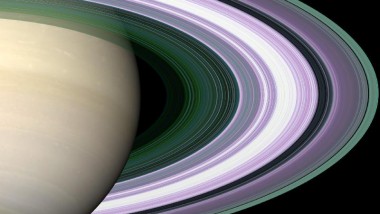Scientists at the Massachusetts Institute of Technology in Cambridge, Massachusetts, working in conjunction with Aurora Flight Sciences Corporation and Pratt & Whitney recently presented two designs for greener airplanes to NASA. The result of a contract awarded in 2008, the ...
Xilinx Reprogrammable FPGA in Space
Scientists at Sandia National Laboratory in Albuquerque, New Mexico have been testing Xilinx reprogrammable FPGAs attached to the International Space Station to ensure they operate properly amid the radiation, particle strikes, and other hazards of space. The certification process is ...
Bully Galaxy Rules the Neighborhood
NASA astronomers are using an image of a galaxy named ESO 306-17 to learn more about the formation of star groups, galaxies and celestial events. Since this galaxy is relatively separated from other observable objects, researchers are able to see ...
Stellar Spire in the Eagle Nebula
Appearing like a winged fairy-tale creature poised on a pedestal, this object is actually a billowing tower of cold gas and dust rising from a stellar nursery called the Eagle Nebula. The soaring tower is 9.5 light-years or about 90 ...
Spitzer Telescope Observes Baby Brown Dwarf
NASA has recently released images of a baby brown dwarf, captured by the Spitzer Space Telescope. The object, which is a unique kind of a star, might be the youngest brown dwarf ever observed; therefore, scientists hope it could shed ...
Evidence of Ancient Lake on Mars
Researchers at the University of Colorado at Boulder have discovered evidence of shorelines on Mars, indicating the presence of an ancient lake on the Red Planet. Found on a broad delta with a series of alternating ridges and troughs, the ...
Butterfly Emerges from Stellar Demise
This celestial object looks like a delicate butterfly. But it is far from serene. What resemble dainty butterfly wings are actually roiling cauldrons of gas heated to more than 36,000 degrees Fahrenheit. The gas is tearing across space at more ...
Martian Rivers and Lakes
Giant cracks that crisscross to form polygons have been imaged on the floors of hundreds of Martian impact craters by NASA’s Mars Reconnaissance Orbiter. Scientists have been aware of them for years, but assumed they resulted from the expansion and ...
Hubble Captures Rare Jupiter Collision
Recently, the world’s largest telescopes have been aimed towards Jupiter. The reason: observing a new, unexplained expanding spot on the giant planet, caused by the impact of a comet or an asteroid. The spot, which is changing from day to ...
Unraveling Saturn Rings
In this simulated image of Saturn’s rings, color is used to represent information about ring particle sizes in different regions based on the measured effects of three radio signals. Three simultaneous radio signals of 0.94, 3.6 and 13 centimeter wavelength ...










